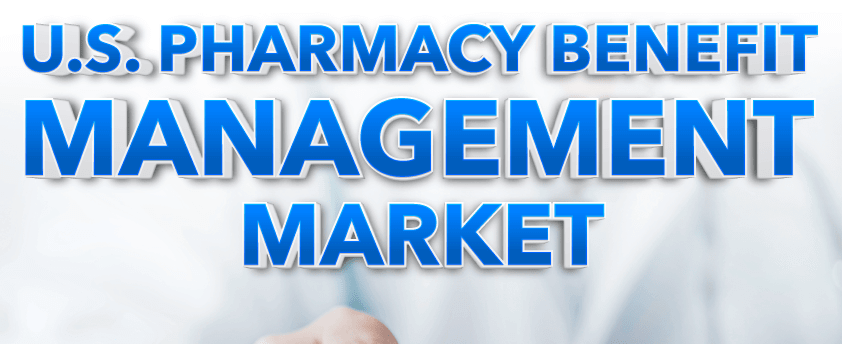U.S. Pharmacy Benefit Management Market Size, Share & COVID-19 Impact Analysis, By Service (Specialty Pharmacy Services, Benefit Plan Design & Administration, Pharmacy Claims Processing, Formulary Management, and Others), By Service Provider (Insurance Companies, Retail Pharmacies, and Standalone PBMs), and Country Forecast, 2023-2030
KEY MARKET INSIGHTS
 Listen to Audio Version
Listen to Audio Version
The U.S. pharmacy benefit management market size was worth USD 498.5 million in 2022 and is projected to grow at a CAGR of 5.9% during the forecast period.
Pharmacy benefit management providers are present among pharmacy stores & drug manufacturers, and insurance providers. These providers reach terms with retail pharmacies and drug manufacturers to supervise branded, generic, and drug spending. The growing demand for cost management of prescription drugs is owed to the increasing healthcare expenditure and rising prevalence of chronic diseases in the U.S.
Moreover, recently, the price inflation of drugs has affected health care costs, thereby surging the adoption of these benefit management among health insurance companies.
The influence of COVID-19 resulted in a positive impact on the market due to the launch of COVID-19 vaccines and high-cost specialty drugs in the U.S. increased the demand for price management of prescription and OTC drugs.
LATEST TRENDS
Growing Adoption of Advanced Technology to Streamline Workflow
In recent years, pharmacy benefit managers have witnessed an adoption of machine learning to smoothen the workflow among insurance providers, drug manufacturers, and retail pharmacy chains. The companies are able to provide quick mail order delivery, streamlined supply chain, and cater to a large number of retail pharmacy chains and commercial insurance within a short period.
For instance, CAPITAL RX is utilizing machine learning and algorithms of Artificial Intelligence (AI) to reduce the time for claim processing and to reduce human errors.
DRIVING FACTORS
Increasing Pharmaceutical Spending is Likely to Boost Market Growth during the Projected Period
The growth of drug price inflation is owed to the high launch prices of new-brand biologics and the price adjustment of branded drugs by drug manufacturers. This pricing inflation leads to an increase in pharmaceutical spending, which goes to the pharmacy and insurance companies.
- According to the article published in Pharmaceutical Technology, drug prices in the U.S. jumped by 4.0% in 2021, breaking the trend of slow growth in past years.
Pharmaceutical benefit management companies working as intermediaries between insurance companies and pharmacies also benefit. Various sources of pharmacy benefit management (PBM) revenue are directly linked with the price of a drug; when drug costs rise, ultimately, PBM companies generate more revenue. Hence, increasing pharmaceutical spending acts as a key revenue driver for the growth of this market.
Request a Free sample to learn more about this report.
In the U.S., there were 9,012 and 10,179 pharmacy stores owned/managed by Walgreens and CVS Health, respectively.
RESTRAINING FACTORS
High Costs for Patients & Healthcare System by Pharmacy Benefit Managers to Hinder Market Growth
Pharmacy benefit managers generate revenue from different sources, most of which are directly linked to the list price of medicine. These managers favor brand medicines, which have high prices, to obtain large amounts of revenue. Furthermore, they are reluctant to use low-priced authorized generics of brand medicines available on the market. Hence, PBMs prefer high-list-price products over lower-list-price generics.
Moreover, pricing complexity allows pharmacy benefit management to purchase products from one stakeholder in the system and distribute the same products at higher prices without understanding the true cost to the payer. Such high prices by pharmacy benefit managers are expected to restrain the U.S. pharmacy benefit management market growth in the coming years.
SEGMENTATION
By Service Analysis
Based on service, the market is divided into benefit plan design & administration, formulary management, pharmacy claims processing, specialty pharmacy services, and others.
The benefit plan design & administration segment is anticipated to grow at the highest CAGR during the forecast timeframe. The growth of this segment is attributed to a large number of patients opting for health insurance and benefit plans designed for medical treatment.
By Service Provider Analysis
Based on service provider, the market is trifurcated into retail pharmacies, standalone PBMs, and insurance companies.
The U.S. pharmacy benefit management market share was dominated by the insurance companies segment in 2022. The growing focus of market players on partnerships and collaborations between PBM service providers and insurance companies is expected to increase the segment during the forecast timeframe.
- For instance, In April 2023, Cigna’s subsidiary Express Scripts announced the expansion of health care in rural communities through partnerships with independent pharmacies across the U.S.
KEY INDUSTRY PLAYERS
In terms of the competitive landscape, this market is dominated by companies such as CVS Health, OptumRx, Inc., and Cigna. The market dominance of CVS Health is attributed to the inorganic growth strategies, including partnerships and the acquisition of other players to expand their geographical presence.
- For instance, in September 2021, OptumRx, Inc. announced a multi-year agreement with Point32Health. The agreement helped OptumRx provide integrated solutions, allowing the company to enhance its services and deliver improved pricing.
On the other hand, prominent players, including Medimpact, Anthem, Inc., Express Scripts, and other companies, are focusing on introducing new solutions and features to expand their portfolio and increase customer reach.
- For instance, in May 2020, Anthem, Inc. introduced IngenioRx, an innovative pharmacy benefits manager. This product uses clinical expertise and a digital-first approach to personalize member experiences in order to increase customer reach and company revenue.
LIST OF KEY COMPANIES PROFILED:
- CVS Health (U.S.)
- Cigna (U.S.)
- OptumRx, Inc. (U.S.)
- Anthem, Inc. (U.S.)
- Abarca Health LLC. (U.S.)
- Express Scripts (U.S.)
- Medimpact (U.S.)
KEY INDUSTRY DEVELOPMENTS:
- November 2021 - Anthem, Inc. entered into an agreement to acquire Integra Managed Care to increase its network.
- April 2021 - CVS Caremark allowed CVS Health to regain its specialty pharmacy business by entering into a larger pharmacy benefit management contract with a Government-wide Service Benefit Plan.
- September 2020 - Medimpact introduced a new solution to integrate prescription discount card saving with a traditional plan.
REPORT COVERAGE
An Infographic Representation of U.S. Pharmacy Benefit Management Market
To get information on various segments, share your queries with us
The U.S. pharmacy benefit management market report provides a detailed analysis of the market. It focuses on key industry developments such as mergers and acquisitions. Besides this, the report also offers insights into industry trends and COVID-19 on the market. In addition to the aforementioned factors, the market report focuses on key aspects such as leading companies, services, and service providers.
Report Scope & Segmentation
ATTRIBUTE | DETAILS |
Study Period | 2019-2030 |
Base Year | 2022 |
Estimated Year | 2023 |
Forecast Period | 2023-2030 |
Historical Period | 2019-2021 |
Growth Rate | CAGR of 5.9% from 2023 to 2030 |
Unit | Value (USD Million) |
Segmentation | By Service
|
By Service Provider
|

Frequently Asked Questions
Fortune Business Insights says that the U.S. market was worth USD 498.5 million in 2022.
The market is expected to exhibit a CAGR of 5.9% during the forecast period (2023-2030).
By service provider, the insurance companies segment accounts for a considerable share of the market.
CVS Health, OptumRx, Inc., and Cigna are the top players in the market.
Get in Touch with Our Experts Speak to an Expert
-
Get in Touch with Us
-
US +1 833 909 2966 ( Toll Free )
-

 View Full Infographic
View Full Infographic






